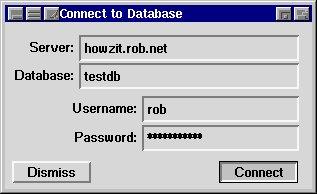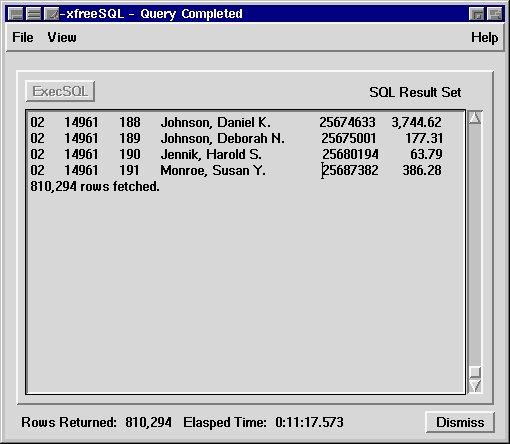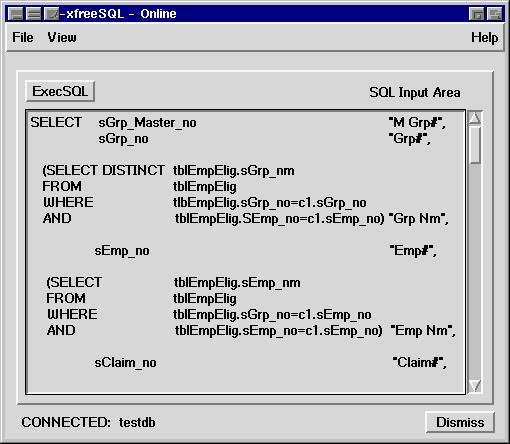
In the process of reviewing Solid Server, my understanding of database technology changed as my level of knowledge elevated.

Manufacturer: Solid Information Technology Ltd
E-mail; URL: info@solidtech.com; http://www.solidtech.com/
Price: $99 US for single user
Reviewer: Bradley Willson
When I installed Solid Server on my computer, I expected to find an application similar to Microsoft Access. Instead I found more “and” less. Solid Server has more raw “horsepower”. It is a race-ready engine waiting for a chassis. I discovered that Solid Server ships without the chassis. The task of “chassis building” (application development) is left up to the programmer. Solid Server's adaptability makes it easy to integrate into the customer's “chassis”. The end result is a database application that is capable of taking on the competition and winning.

In the process of reviewing Solid Server, my understanding of database technology changed as my level of knowledge elevated. I quickly realized I was dealing with a product possessing capabilities beyond my experience. Thanks to SSC's info@linuxjournal.com, I was able to recruit Rob Wehrli to help validate SQL standards and some of the technical aspects of the review. This review is the product of our e-mail collaboration across the Pacific. The screen-shots are from an interface application Rob is using with Solid Server.
Solid Server for Linux 2.2 is powerful, extensible and extremely capable of serving database requirements ranging from a simple desktop application to a corporation-wide business integration. The combination of Solid Server's file handling capabilities (which reportedly extend into the 30TB range), multiple platform availability and extensive communication protocol suite makes Solid Server 2.2 an intelligent choice for a wide range of applications. I was unable to test the 30TB claim and networking capabilities because of my limited resources; however, judging from the list of companies using Solid Server, I am inclined to agree with these claims.

There is strength in numbers. Solid has ported its server to Linux and at least seven other popular platforms. Their installed base reads like a “Who's Who” in the global marketplace, giving one the feeling that this product is the proverbial “better mouse trap”. Names like Nokia, CompuWare and Tallahassee, Florida's Department of Highway Safety and Department of Motor Vehicles appear on their roster. Deutsche Telekomm, a major German telecommunications company, has purchased a large number of Solid licenses specifically for Linux. Solid Server is even embedded in Kone Elevator's control systems. Many of Solid's business customers and strategic partners have WWW sites, making it easy to gather references and additional information about the product. Kone Elevators maintains a web site at http://www.kone.com/ containing more information about their products and EleVision, their integration of Solid Server.
Communication is the heart and soul of Solid Server. For example, a database created on an NT platform can be moved, without conversion, to a Solid Server running on a Linux platform. Furthermore, the same database can be accessed by one or more client applications simultaneously, via any of seven common protocols, over a network or on one machine. The login screen-shot displays a simple interface to a networked database. Solid reports compliance with Entry Level SQL2 syntax, significant features from Intermediate Level SQL2, SAG CLI standards. The API also features 16 and 32-bit ODBC drivers and Solid's own SA interface, giving the customer the added flexibility to integrate Solid Server within existing structures with minimal conversion. The query screen shot shows the SQL instructions used to extract the data shown in the result set example.

Data integrity is only as good as the steps taken to preserve it. Solid Server accomplishes this task using automated backup, concurrent logging and check points. Few applications can recover from a surprise shutdown, but Solid Server lost nothing during my testing. It is safe to say a stand-alone installation of Solid Server will survive most, if not all, system surprises. My system logs reported all of the recoveries as successful. Furthermore, the recovery process was so quick I hardly had time to read the extra line displayed.
This game belongs to the quick—Solid Server is fast. On a Pentium 75 with 20MB of RAM, it processed my small examples instantaneously. There was no appreciable degradation in performance as I added more and more information to the database. My test bed is humble by today's technology standards, but Solid Server performed beyond my expectations. It consistently returned result sets in a matter of seconds. Rob's result set screen-shot depicts results from a significantly larger database.
Assessing the quality of the documentation was an important aspect of my review process. Because my idea of a database was defined by Microsoft Access, I decided it would be wise to read Solid's documentation. The effort paid off and I gained a better understanding of how SQL and true relational databases work. The books and HTML documents are written with a focus on Solid's Windows versions. As I read the documentation, I felt I was in familiar Windows territory, yet I was constantly translating terminology from the Windows environment to Linux equivalents. This is one aspect of Solid Server I would like to see improved. I recommend moving the referenced README files to the printed and HTML pages, merging them into the context as appropriate.
If you have questions, there are several options to explore. You can contact Solid's technical support through your local distributor who may offer a toll-free number or e-mail address. You can call Solid Information Technologies, Ltd. in Helsinki, Finland, or send an e-mail to their headquarters tech support. Solid does not offer a toll-free number. I sent e-mail directly to Solid on two occasions and received answers within 24 hours each time.
Solid Server 2.2 is value priced. The extensive list of features and capabilities give the Solid Server consumer an excellent return on his investment. Priced at three levels—$99 US per single user, $199 US per seat for multiuser and $495 US per server with Web- enabling option—this RDBMS is affordable for small businesses and large corporations alike.
Solid's decision to port to Linux complements the growing number of professional mainstream products that make Linux a respected contender for mission-critical business requirements. This is a tremendous benefit to the Linux community. It reinforces the value of Linux in the global market and generates renewed interest in applying Linux in place of other more costly operating systems. Solid Server's open platform architecture is making it easier. The informed purchase decision can no longer be based entirely on “which” RDBMS product to buy, but must also consider on which platform it will be used. Given Linux's return on investment, one begins to lean toward “free” Linux. Solid Server 2.2 raises the bar for competing RDBMS producers and demonstrates a strong commitment to Linux as a world-class operating system.
I give Solid Server for Linux v.2.2 a “solid” two thumbs up.